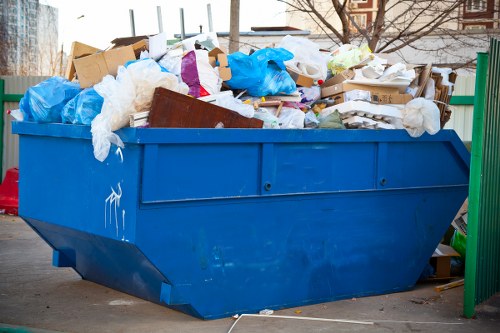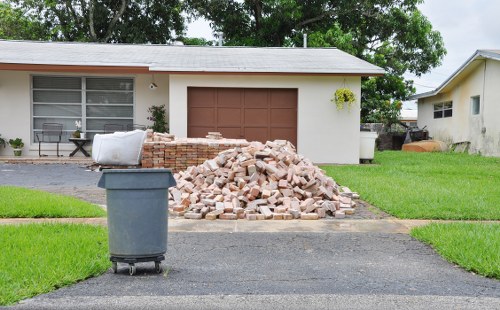Comprehensive Guide to Site Clearance in Forest Gate
Introduction to Site Clearance

Site clearance is a crucial first step in any construction or development project. In Forest Gate, where ecological sensitivity and urban development intersect, efficient and responsible site clearance ensures the sustainability and success of future endeavors.
Understanding the process and importance of site clearance can help property owners and developers navigate the regulatory landscape while minimizing environmental impact.
In this article, we will explore the various aspects of site clearance in Forest Gate, from planning and regulations to the actual removal process and post-clearance steps.
Why Site Clearance is Essential

Site clearance paves the way for new construction by removing existing vegetation, debris, and other obstacles. In Forest Gate, this process must balance development needs with environmental preservation.
Key reasons for site clearance include:
- Preparation for construction activities
- Ensuring safety and accessibility
- Compliance with local regulations
- Minimizing environmental impact
Proper site clearance sets the foundation for a successful project by addressing potential challenges early on.
Regulatory Framework in Forest Gate

Forest Gate operates under specific local and national regulations governing site clearance. These laws are designed to protect the environment, ensure public safety, and maintain the area's character.
Key regulatory considerations include:
- Environmental Impact Assessments (EIA)
- Permits for vegetation removal
- Waste disposal guidelines
- Zoning laws and land use policies
Complying with these regulations is not only legally required but also fosters community trust and environmental stewardship.
Step-by-Step Site Clearance Process

Executing site clearance involves several critical steps, each requiring careful planning and execution to ensure efficiency and compliance.
1. Initial Assessment
Before any physical work begins, an initial assessment of the site is conducted to identify existing structures, vegetation, and potential hazards.
2. Obtaining Permits
Securing the necessary permits from local authorities is essential. This may involve submitting detailed plans and undergoing inspections.
3. Vegetation Removal
Selective removal of trees and plants is performed, prioritizing non-native species and ensuring minimal disruption to the local ecosystem.
4. Debris Management
All removed materials are responsibly disposed of or recycled, adhering to environmental guidelines.
5. Final Inspection
A thorough inspection ensures that the site meets all clearance requirements and is ready for the next phase of development.
Equipment and Techniques Used

Efficient site clearance in Forest Gate relies on modern equipment and advanced techniques that enhance productivity while reducing environmental impact.
- Heavy machinery like excavators and bulldozers for large-scale clearing
- Handheld tools for precision work in sensitive areas
- Eco-friendly methods to minimize soil erosion and habitat destruction
- Advanced waste management systems for responsible disposal
Choosing the right equipment and methods is vital for ensuring that site clearance is conducted safely and effectively.
Environmental Considerations

In Forest Gate, environmental conservation is a top priority during site clearance. Strategies to mitigate ecological impact include:
- Protecting local wildlife and their habitats
- Preserving mature trees and significant vegetation
- Implementing erosion control measures
- Using sustainable waste disposal practices
These considerations help maintain the ecological balance and promote sustainable development in the area.
Cost Factors in Site Clearance

The cost of site clearance in Forest Gate can vary based on several factors, including the size of the site, the extent of vegetation, and the complexity of the project.
Key cost determinants:
- Land size and terrain complexity
- Type and density of vegetation
- Regulatory compliance requirements
- Disposal and recycling expenses
- Labor and equipment costs
Accurate budgeting and planning are essential to manage these costs effectively.
Choosing the Right Site Clearance Service

Selecting a reliable and experienced site clearance service ensures that the process is handled professionally and efficiently.
Consider the following when choosing a service provider:
- Experience in Forest Gate or similar areas
- Compliance with local regulations
- Range of services offered
- Equipment and technology used
- Customer reviews and reputation
Partnering with the right experts can streamline your project and prevent potential issues.
Post-Clearance Steps

After site clearance, several important steps ensure the site is prepared for construction and future use.
Site Grading and Leveling
Proper grading ensures a stable foundation for construction and effective drainage management.
Soil Testing
Testing the soil quality helps identify any contaminants and assesses its suitability for building purposes.
Preparation for Construction
Final preparations may include establishing access routes, setting up temporary facilities, and coordinating with construction teams.
Common Challenges and Solutions

Site clearance projects can encounter various challenges, particularly in urban-edge areas like Forest Gate.
- Access Constraints: Limited access can be managed by careful planning and scheduling.
- Environmental Restrictions: Adhering to guidelines ensures compliance and reduces delays.
- Unexpected Obstacles: Flexibility and contingency planning help address unforeseen issues.
- Noise and Pollution Control: Implementing mitigation measures minimizes disturbances to the surrounding community.
Proactive problem-solving and expertise are key to overcoming these challenges effectively.
Benefits of Professional Site Clearance

Engaging professional site clearance services offers numerous advantages, from time savings to enhanced safety and compliance.
- Expertise and experience ensure high-quality work
- Access to specialized equipment and techniques
- Compliance with all regulatory requirements
- Efficient project management and execution
- Minimized environmental impact
These benefits contribute to the overall success and sustainability of your project.
Case Studies in Forest Gate

Several successful site clearance projects in Forest Gate highlight best practices and effective strategies.
Residential Development Project
A large-scale residential development required extensive site clearance. The team employed selective vegetation removal, ensuring the preservation of key trees and habitats, resulting in a harmonious balance between development and nature.
Commercial Construction Initiative
A commercial site clearance involved complex debris removal and land grading. Utilizing advanced machinery and experienced personnel, the project was completed ahead of schedule with minimal disruption to the local community.
Future Trends in Site Clearance

The field of site clearance is evolving with advancements in technology and increased emphasis on sustainability.
- Integration of GIS and mapping technologies for precise planning
- Adoption of eco-friendly machinery and methods
- Greater focus on waste reduction and recycling
- Enhanced safety protocols and training
- Increased use of data analytics for project optimization
Staying abreast of these trends ensures that site clearance practices remain efficient and environmentally responsible.
Conclusion

Site clearance in Forest Gate is a multifaceted process that requires careful planning, adherence to regulations, and a commitment to environmental stewardship. By understanding the intricacies involved and partnering with experienced professionals, property owners and developers can ensure successful and sustainable project outcomes.
Ready to start your site clearance project? Contact us today to discuss your needs and book your service now.